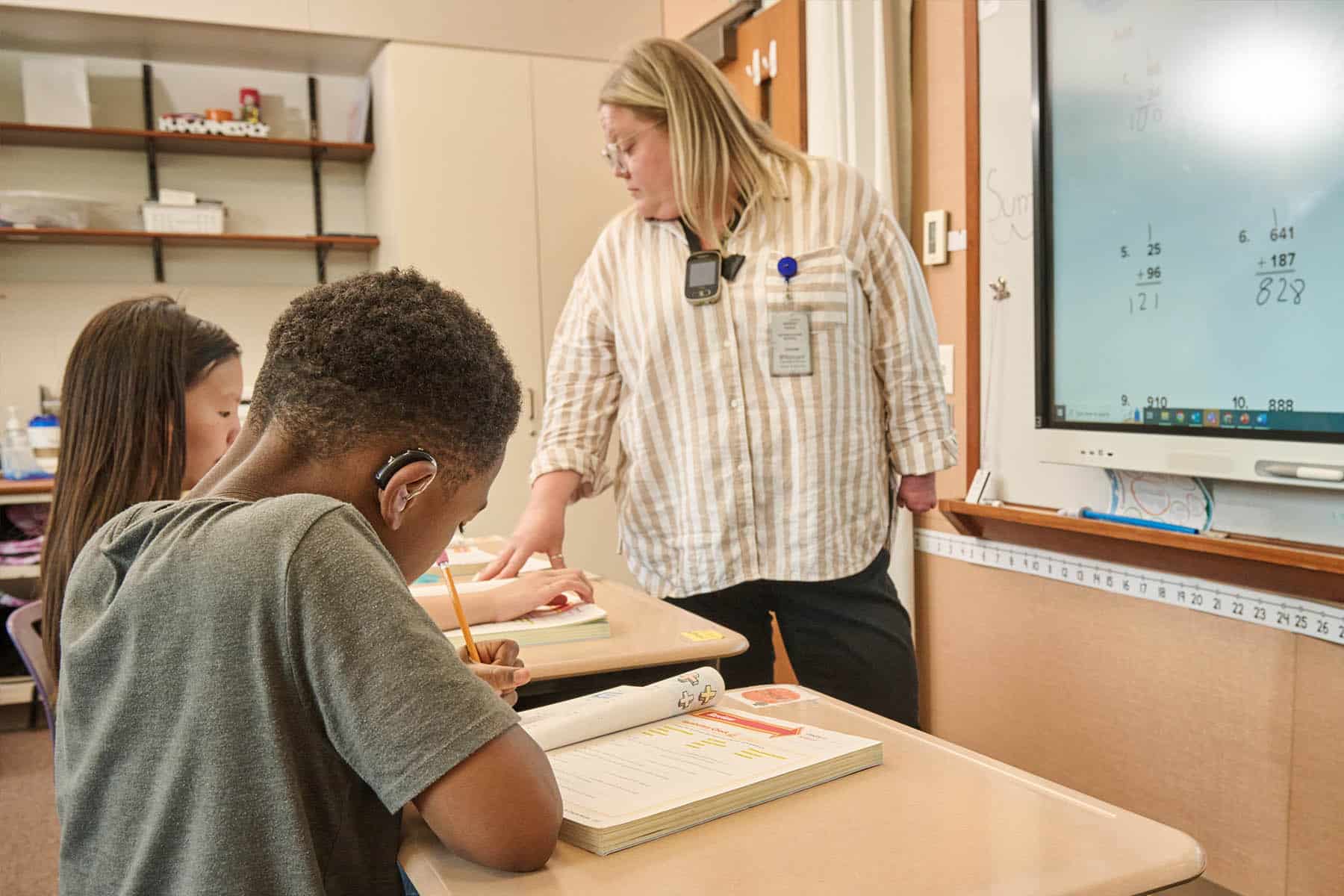Reflect on the school in-services you participate in every year or a conference you have attended to learn about a new topic. Those days always feel long and hard. We feel exhausted even though we have been sitting all day. Why? Because we are experiencing listening fatigue. When our brains need to listen and process information for an extended period, it’s mentally draining.
Listening fatigue is more prevalent for a person who is deaf or hard of hearing. The brain needs to make sense of a message received through a degraded signal. It has to work harder to decipher every sound it receives. Listening fatigue can be a daily occurrence for people with hearing loss. What should we be on the lookout for with our students, and how can we help?
Signs
- Physical decline
- The student may begin slumping or slouching in her chair or have a hard time keeping her head off her desk.
- Irritability
- The student may seem grouchy when interacting with peers and teachers.
- Appearing unfocused or distracted
- The student may seem as though she is not listening or paying attention to your lessons.
- The student may require more repetition of instructions than usual.
- The student may display difficulty following directions.
- Headaches
- The student may complain of headaches or potentially stomachaches.
Strategies
- Quiet breaks
- Younger students can go to the calm corner. For older students, this might be a good opportunity for silent reading or individual work time.
- Though we want to give students a break from noise, we do want to continue with the overarching goal of device use during all waking hours. Discourage device removal during these times.
- Decrease background noise
- Make sure the classroom door is shut, the student is away from HVAC units, and classmates are calm.
- Nap
- If allowed, let the student take a nap, either in the classroom or the nurse’s station.
Look for patterns in the signs you see; maybe the fatigue is setting in at a similar time of day (in the afternoon) or during a time with a heavy listening load (lecture period). If patterns develop, alter your classroom schedule to meet their needs when possible. Be proactive with your students. Strategies such as a quiet break and reduced background noise can be implemented before the signs of listening fatigue begin to manifest in a student. Take these things into consideration to best support your students who are affected by listening fatigue.













